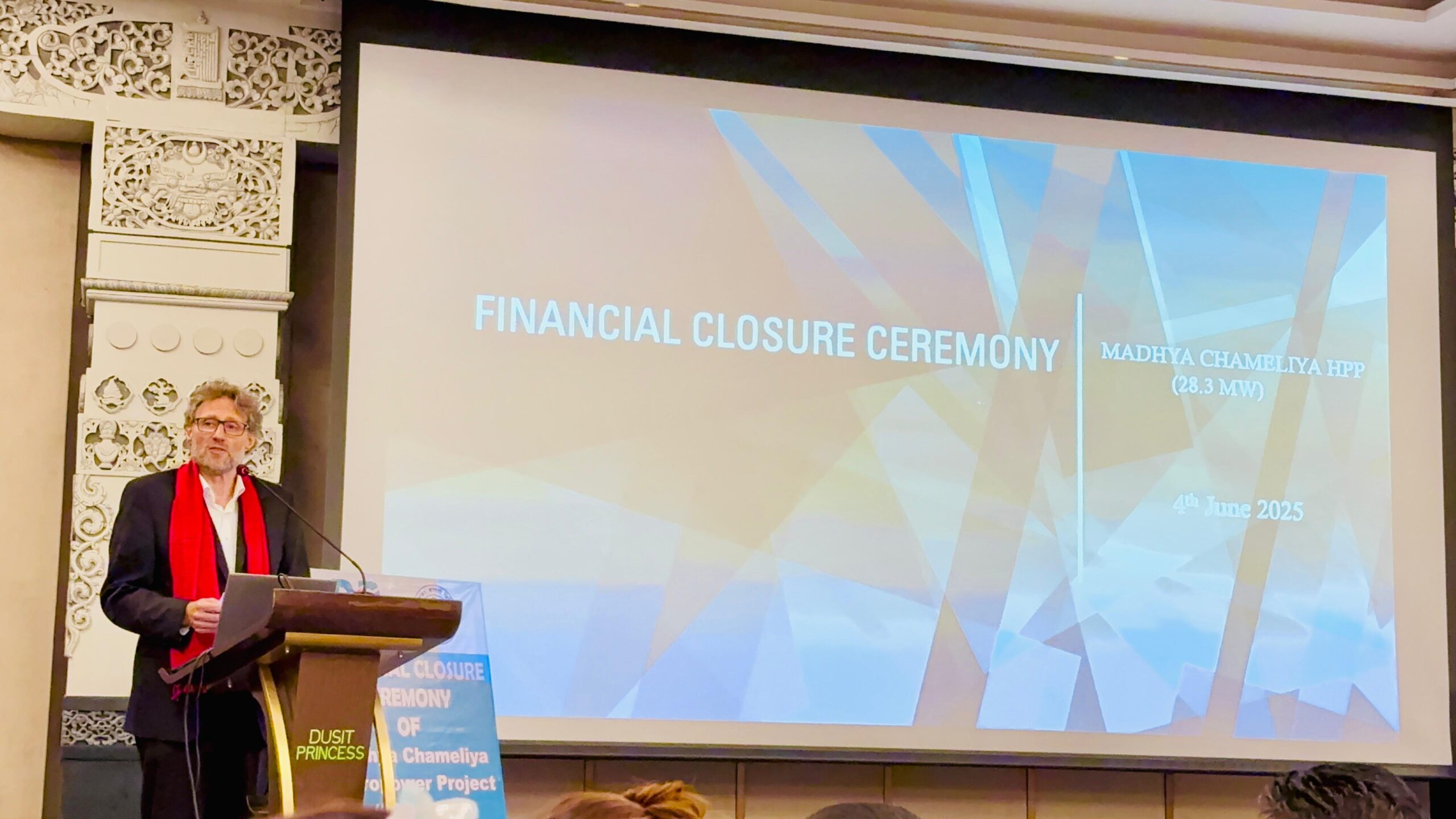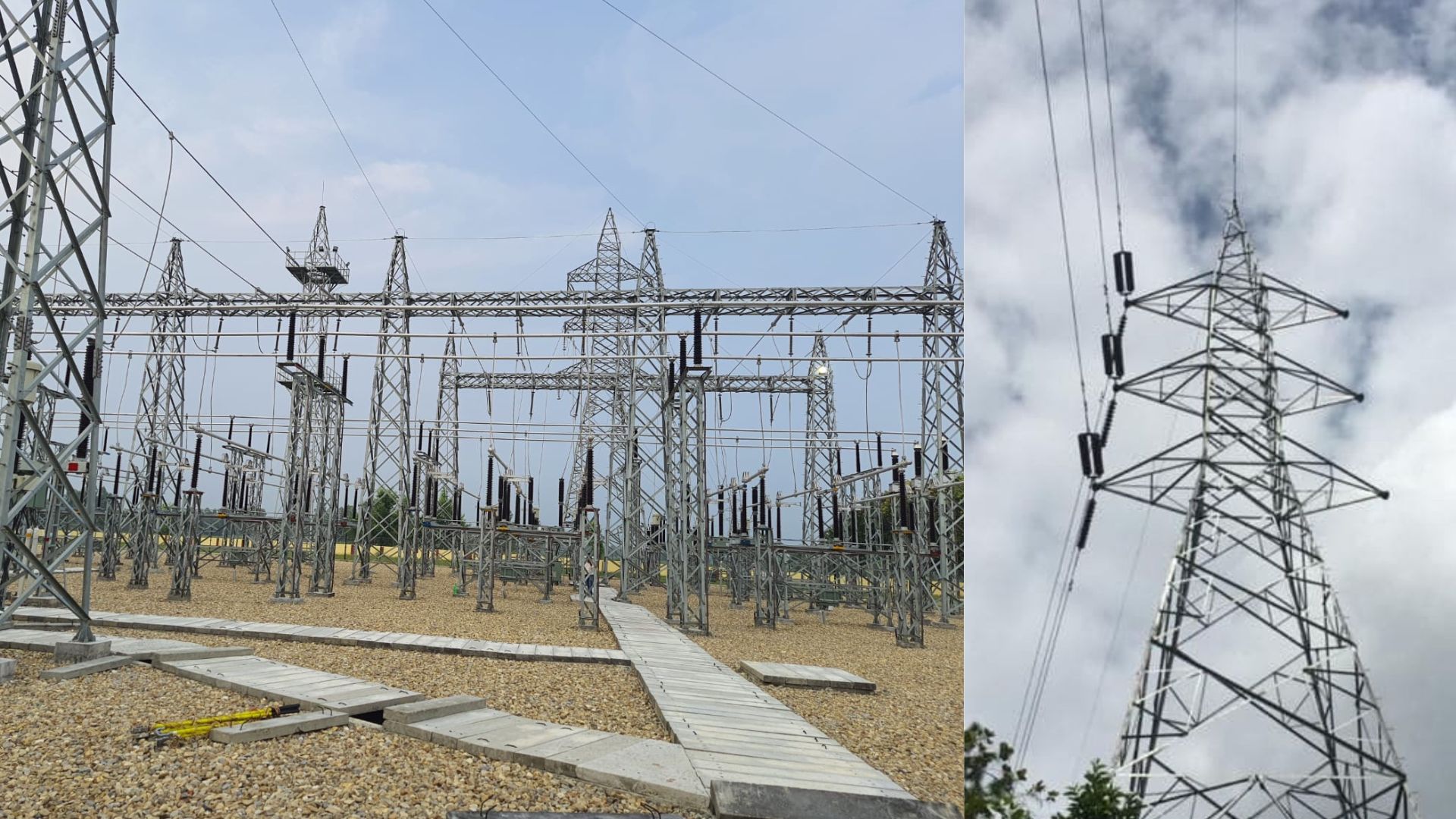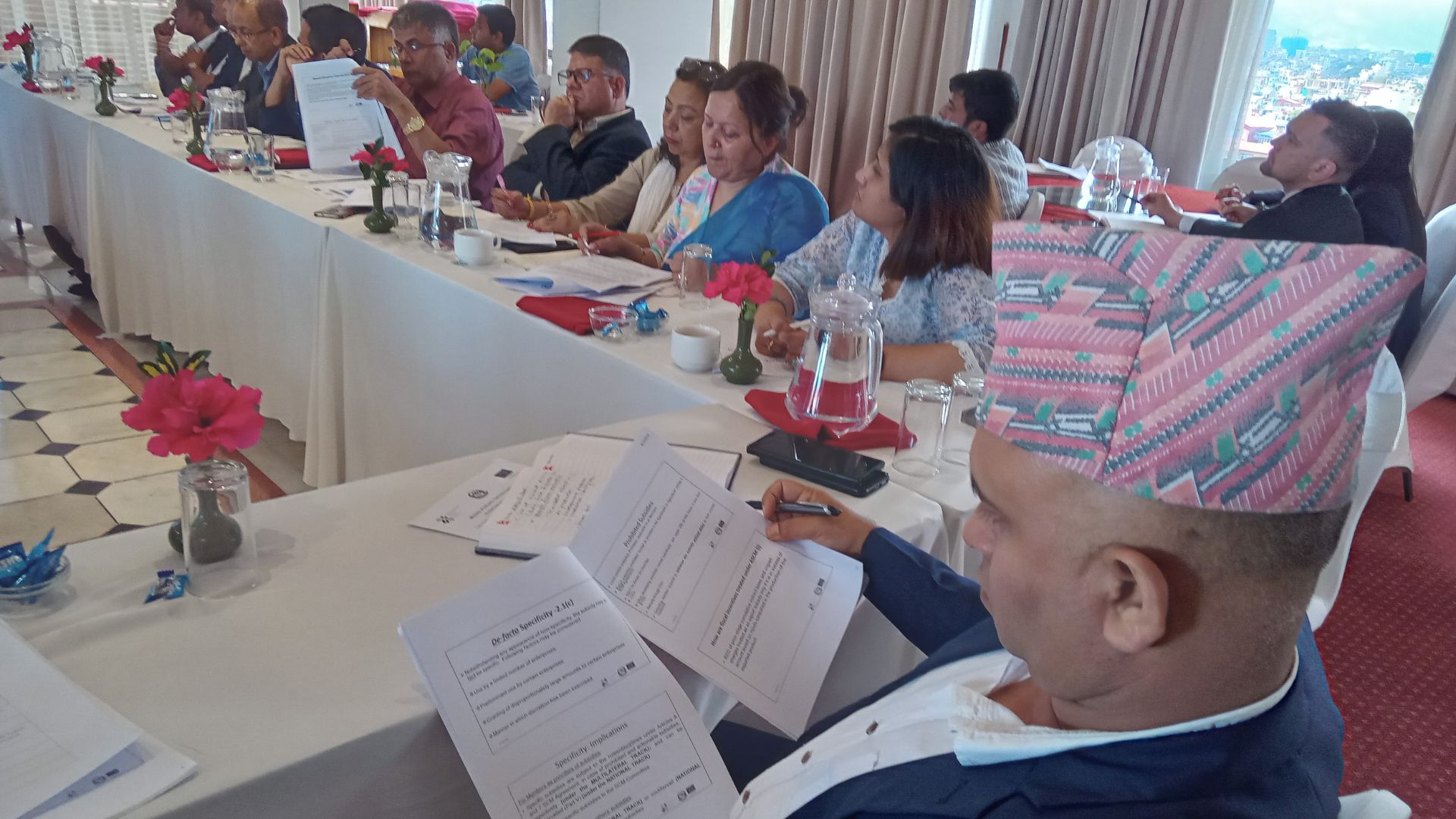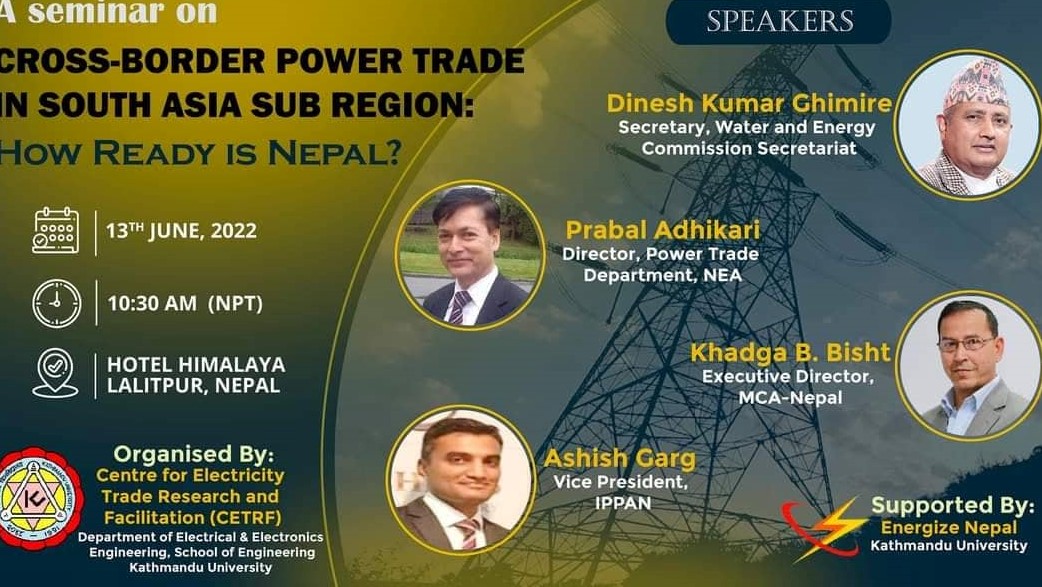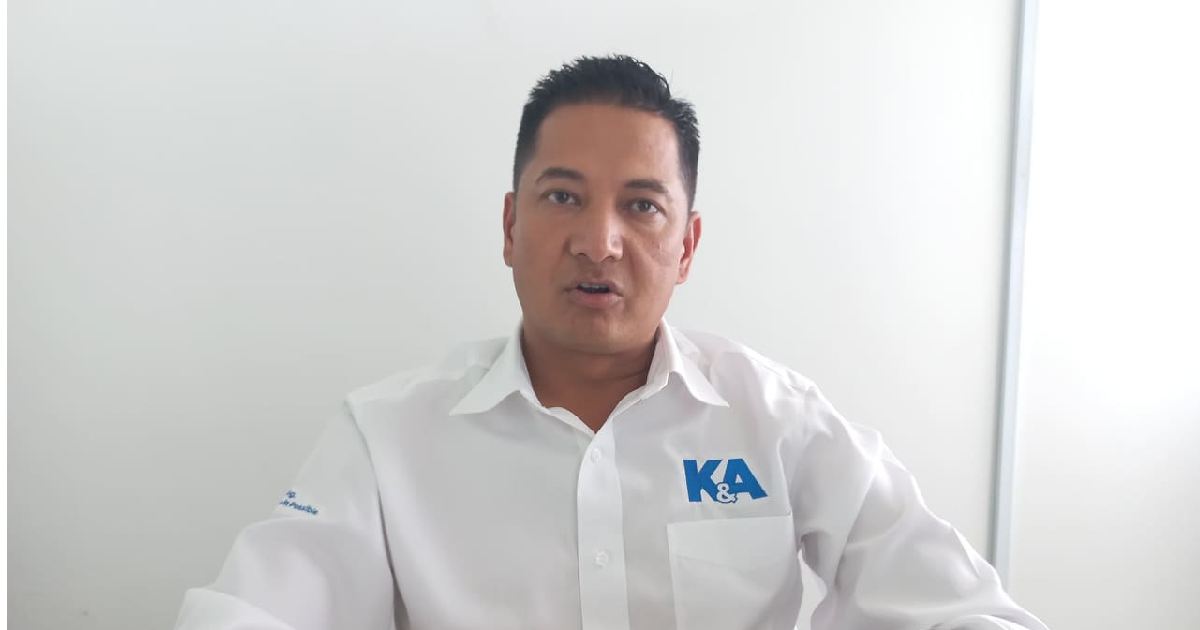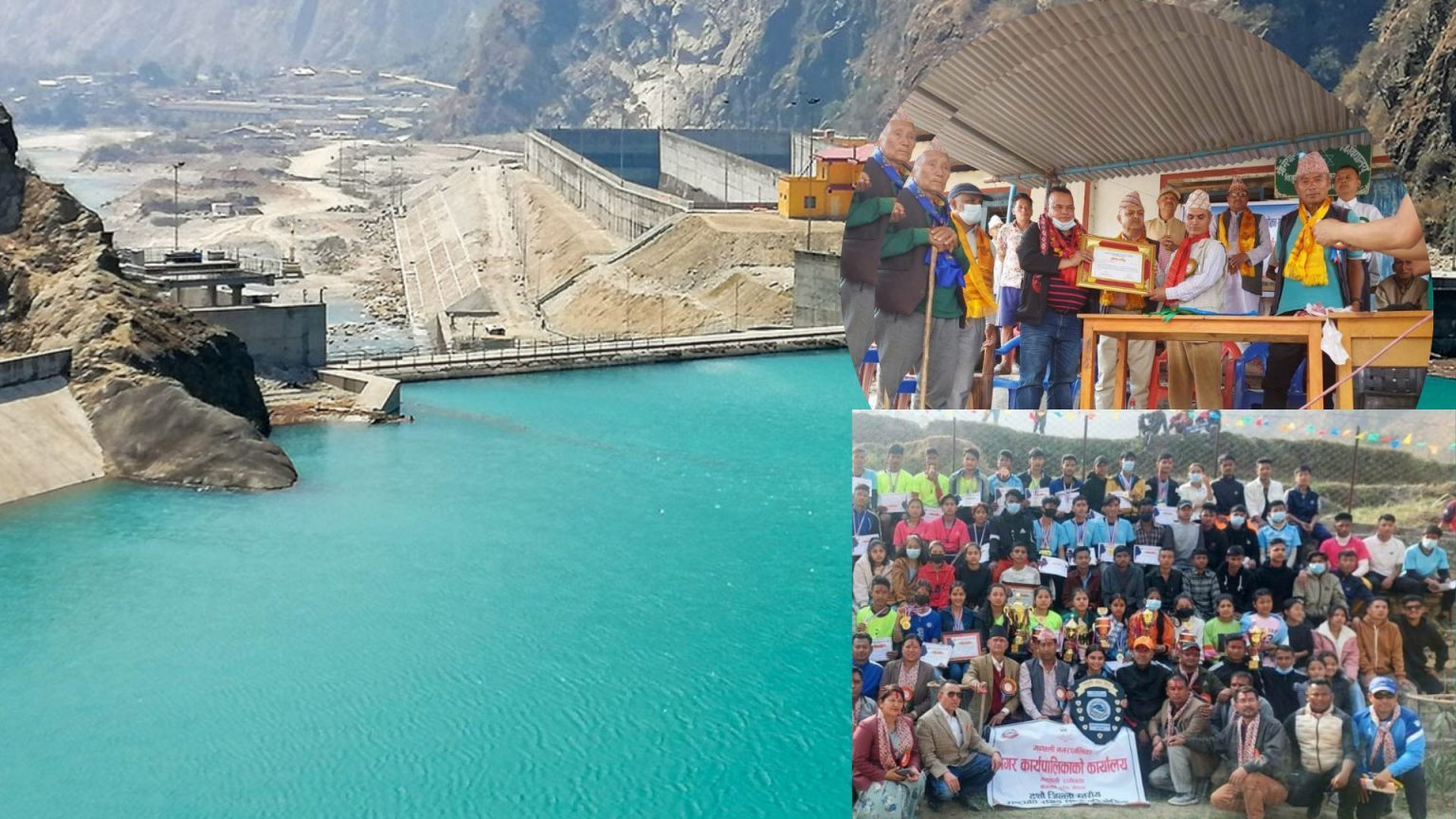
Until 10 years ago, women suffering from labor pains in Dolakha’s Vigu rural municipality area had to be carried on their shoulders for two days and taken to Charikot Hospital. There was no option to carry the patients on their backs for treatment due to the impassable road from Lambagar to Singti. Before 2068 B.S. Kami Sherpa of Vigugaon Ward No. 3, who was carried to Charikot Hospital several times when he fell ill, still remembers it vividly. “Because there is no road for vehicles, I have reached Singti many times by carrying myself on Doko.” If the upper Tamakoshi had not come, even now the residents here would have been the same!
Where would such a facility be? Now vehicles started coming in the yard. With the construction of the Upper Tamakoshi project, many kinds of sufferings of the local residents of Vigu Rural Municipality have been reduced. Residents of this place, who have spent years carrying pregnant women and patients in need of emergency treatment to the hospital by Doko, are now starting to feel that they are old. It was very difficult for women in labor to go to the hospital because they could not give birth at home. The risk of death is the same. There are cases where some women have died while being taken on the road’, she narrated the tragic past and added, ‘But now, we can easily take her to a well-equipped hospital at any time. People have not died in famine.’ Now vehicles have started passing through the courtyards of houses. A well-equipped health post has been opened in the village. There is no such thing as in the past where people have to die prematurely without receiving treatment.Due to the lack of road access, it was very difficult for women and children to walk alone.
However, now that the vehicles have started running regularly, such problems have been solved by themselves. Some vehicles used to ply from Singti to Charikot. This is a good example of how much a hydropower project will mean to the livelihood of the local people. Before the construction of the 456 MW Upper Tamakoshi Hydropower Project, the local residents of Vigugaon Palika Ward No. 3 Lamabagar, Gongar, Jagat and others were far from the access of road transport. On the 28.6 km stretch from Lamabagar to Singti, there were nothing more than the remote slope and footpath. However, no one can deny the contribution of Upper Tamakoshi in the construction of this section of road so quickly. Due to the Upper Tamakoshi project, a detailed engineering design (DPR) of 28.6 km road and seven bridges on that section was prepared in 2058.
At the end of the year 2016, tenders were invited for the construction of the road of Package 1 from Singti Bazar to Lamabagar section. At the beginning of the year 2062, the construction of the entrance was started. During the year 2067/68, the 28.6 km stretch of road from Singti to Lamabagar was opened.
From the fiscal year 2068/69, regular vehicles started running from Singti to Lamabagar. Phurwa Chhiring Sherpa of Lamabagar also says that since the Tamakoshi hydropower project was built, they were able to get the road facilities as soon as possible. “If there was no Tamakoshi river in our Lamabagar, the Upper Tamakoshi hydropower project would not have been built here,” he said. We would not have got the road so soon.
With the construction of Upper Tamakoshi, the local residents of Vigu Rural Municipality have got a chance to benefit directly or indirectly. Due to the geographical difficulty, the local residents who are far away from the reach of darkness and road transport do not have that compulsion. Not only has this, the local residents of the rural areas now also become the owners of the shares of the Upper Tamakoshi hydropower project. The Upper Tamakoshi project has spent 1 billion 96 corore 8 lakh rupees for road access and other infrastructure. On the other hand, Upper Tamakoshi Hydropower Company Limited has spent more than 190.0000005 million rupees under social responsibility during the fiscal year 2063/64 to 2077/78.
The company has completed 347 large and small projects during that period. The Upper Tamakoshi project has been working in areas such as local schools, health posts, rural roads, women’s empowerment, protection and development of local Temple and monasteries. Now the local residents of Vigugaon are experiencing a lot of changes after the hydropower project.
Nor was there electricity. Not even the road,” said Anand Kumari Shrestha of Vigugaon Ward No. 1 Jagat. If you look at Bigu in 2054 and now, it looks like Kathmandu now. Yadav Prasad Acharya, a resident of Vigugaon Ward No. 1 Jagat, says that the royalties received from the hydropower projects in the Upper Tamakoshi basin should be spent on the plan to change the face of the local people. The upper Tamakoshi has recently been put into operation. “According to the rules of the federal government, at least 25 percent of the royalties should be spent on the plans to make the local people self-sufficient,” he said.
Mohan Dangi, Vice President of Independent Energy Producers Association of Nepal (IPPAN), says that the local residents of the affected areas are benefiting from the hydroelectric project. “During the construction of the hydroelectric project, many types of development work is being done in the project-affected areas,” he said.
Based on preliminary environmental tests or environmental impact assessment reports, the hydroelectricity promoter companies are building essential infrastructure in the project-affected areas. “During the construction of hydropower projects, many types of visible and invisible infrastructures are being forced to be built,” he said. In some projects, the illegal demands of the local government and local residents have to be addressed.
The former president of IPPAN, the association of independent energy producers, Suvarnadas Shrestha says that hydropower projects under construction or produced are distributing part of the economic and social benefits to the local people.
Local residents are benefiting directly or indirectly from the hydropower project. “Whether it is during the construction period or after the construction is completed, they are taking benefits,” he said. In the Concept Paper 2072 related to the National Energy Crisis Prevention and Electricity Development Decade, under the Community Support Program, any 100 MW hydropower project has a provision that 0.75 percent of the total cost should be spent under the Community Support Program.Similarly, hydropower projects with a capacity of more than 100 megawatts have a provision to spend 0.50 percent of the total cost under the community support program.
Not only that, according to the Securities Registration and Issuance Regulations 2073, any hydroelectricity promoter company has a provision to set aside 10 percent shares for local residents. It is also working to establish the local residents as owners of hydropower projects. On the other hand, there is a provision that IPO cannot be issued more than 49 percent of the total paid-up capital of the promoter company. In the Industrial Promotion Act 2076, if the annual turnover is more than 150 million, there is a provision that 1 percent of the net profit should be set aside for corporate social responsibility.
Since the Upper Tamakoshi project can also generate an annual income of around 9 billion rupees, it will also have to allocate 1 percent of the profit under social responsibility. It will help in social activities. The Environment Act 2079 also has a provision to set aside 1 percent for the environmental service fee. According to the Electricity Act 2049, hydropower projects have to pay an annual royalty of 100 rupees per kilowatt.
Job creation
Generally, 300 workers get employment opportunities when constructing a hydropower project of one megawatt capacity. After the construction of the project is completed, 10 people per megawatt will get employment opportunities for a period of 30 years. According to a study conducted by the former chairman of IPPAN Shrestha, Mai Hydropower Company released the data that created employment opportunities for 550 people during the construction period. During that time, 250 local residents and 300 workers from other areas were employed. During the construction of Sunkoshi hydropower project, 250 people got employment. 75 of them were locals. 600 people were employed during the construction of Lower Likhu hydropower project. Among them, 250 local residents got employment opportunities. During the construction of Madhya Tamor hydropower project, 650 people were employed.
Among them, 200 local people got employment. With the completion of the hydropower project, the locals have been getting regular jobs. After the completion of construction of Maikhola hydropower project, 62 people have got regular employment opportunities. Out of 62 people, 34 locals have got jobs according to their skills and abilities.
Even after the completion of Sunkoshi Hydropower, 24 people are being given regular employment opportunities. Among them, 14 local residents have created employment opportunities. Lower Likhu hydropower project is also providing employment opportunities to 62 people after generating electricity Out of them, 25 locals have got employment. At least 50 percent of the employees who are employed after the completion of a hydropower project are getting employment opportunities.
It will also help in social activities. The Environment Act 2079 also has a provision to set aside 1 percent for the environmental service fee. According to the Electricity Act 2049, hydropower projects have to pay an annual royalty of Rs 100 per kilowatt. In the law, there is a provision to pay energy royalty of 2 percent per kilowatt. Selling 10,000 megawatts will earn 45 billion rupees in one year. Prakash Dulal, a member of the working committee of IPPAN, says that if Nepal can export 10,000 megawatts of electricity, it can earn 45 billion rupees annually.
“Currently exporting one megawatt of electricity can generate an annual income of 45 million rupees,” he said. It is possible to earn two times more than the current trade deficit of Nepal. Now the trade deficit of Nepal is more than 18 billion annually.
Energy expert Arun Subedi says that the strategic privilege of the energy sector will create an opportunity to bring about a revolution in the country’s economy. “Venezuela and Brazil have made a lot of economic progress by promoting the energy sector as a strategic privilege in the energy sector”, he said.
He said that it is high time that electricity should be promoted as a strategic privilege as there is sufficient capacity to build hydropower projects in Nepal. Energy expert Subedi said that the hydropower project will increase self-sufficiency in energy security and energy mix. “If enough hydropower projects can be built in Nepal, the foreign trade deficit with India can also be reduced,” he said.
Discrimination in Royalty Allocation
In the Inter-Governmental Finance Management Act, there is a provision that 50% of the collected amount will be given to the union and 25/25% to the province and local levels while distributing royalties of natural resources. However, all local levels and provinces do not have the same kind of natural resources and resources, so all local levels and provinces are missing out on receiving similar royalties. In the Act, geographical location, area and population have been emphasized in the formula for distribution of royalties collected from hydropower, mining and minerals, forestry and mountaineering. However, when natural resources are more or less in a place, there is a problem in getting returns.
Laxmi Prasad Regmi, information officer of the National Natural Resources and Finance Commission, said that when the basis for receiving royalties was determined based on various indicators in the Inter-Governmental Finance Management Act, there was uniformity in the distribution of royalties. “According to the law, 40 percent is allocated to the geographical location for mountain climbing, 10 percent to the local level where the base camp is located, 25 percent to the area of the affected area and 25 percent to the population of the affected area,” he said.
The Commission is also trying to make it distribution wise by replacing the practical problems seen in the Act. In the act, the geographical location of electricity is considered to be 50 percent, the area of the affected local level is 25 percent and the population of the affected level is considered to be 25 percent. Local bodies that own power plants and dams get 80 percent of the royalty and the rest 20 percent. Similarly, 20 percent is given to the location of the national forest, 40 percent to the forest area, 20 percent to the population at the local level, 10 percent to the population dependent on the forest and 10 percent to the participation in the protection and sustainable management of the forest.
10 percent is given to the location of intermediate and conservation areas towards protected forests, 40 percent to local level areas in intermediate and conservation areas, 35 percent to population and 15 percent to participation in sustainable management scored .With this arrangement, the entire royalty is being received only by the concerned municipality.
In terms of minerals, 50 percent is given to geographical location, 30 percent to the area of the affected area and 20 percent to the population scored. Most of it has been given only to the local bodies of mining areas. Information officer Regmi said that the Commission is trying to move forward by correcting the errors and weaknesses seen in the Act in a timely manner.
Madhu Prasad Vetuwal, the spokesperson of the Ministry of Energy, Water Resources and Irrigation, said that along with the construction of the hydropower project, the construction of the project is going on so that the locals will also get a return. “When large-scale infrastructure is built, there will certainly be some destruction. However, taking care of the destroyed structures, they are working on the main plan of the local people as a priority,” he said.
“Whenever a project is built, special attention is paid to the distribution of benefits so that the local residents are also involved in the project.” Even during the hydropower construction phase, the local residents get direct or indirect employment. Not only that, the engineers in the country are also applying the experience and skills gained in one project to other projects. He said that the engineers who worked on the Khimti project at the initial stage got the opportunity to work on other projects. This kind of experience is working to have a multiplier effect.
Now more than 130 projects are under construction. Hydroelectricity is the basis of Nepal’s prosperity. Renewable energy production using local resources has many benefits. “Nepal is obliged to purchase petroleum products worth trillions of rupees every year,” he said “The electricity produced in Nepal will not only replace such imported petroleum products, but will also move the domestic dollar reserves and the economy on the path of self-sufficiency.”


